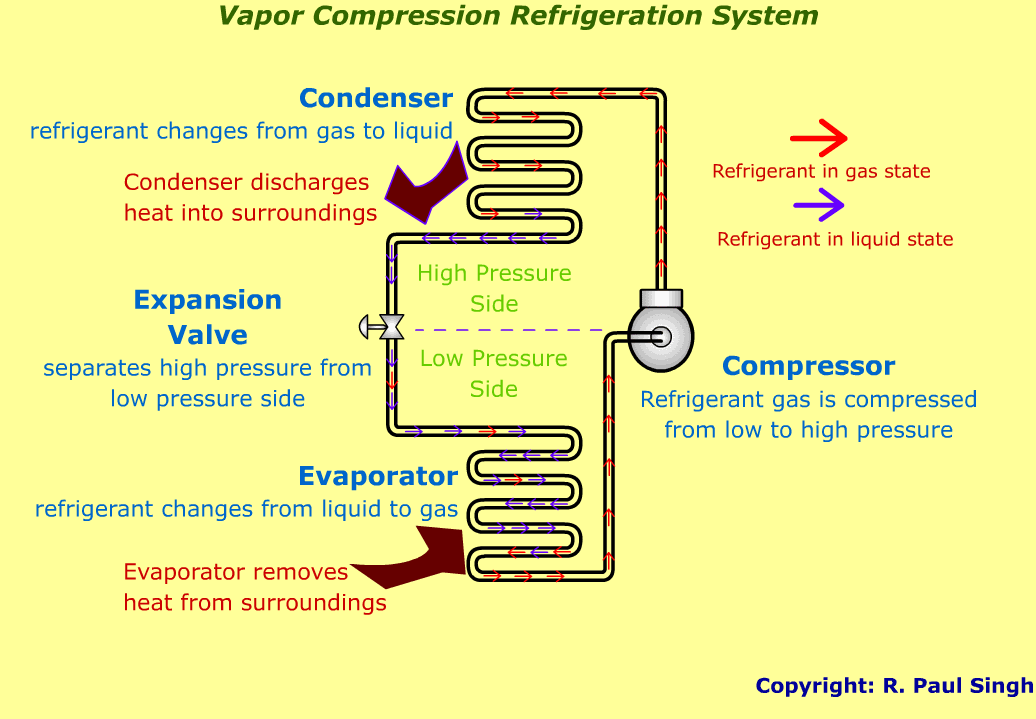Goal: When you have finished this laboratory exercise you will understand
- the role of major components of a refrigeration system
and you will learn
- how a refrigeration system is depicted on a pressure-enthalpy diagram
- the effect of evaporator and condenser temperatures on the coefficient of performance and compressor power requirements
- the role of superheating and subcooling of a refrigerant
-
In a laboratory experiment, we use a pilot-scale refrigeration system, as shown in the following photograph.

-
Evaporator
The refrigerant evaporates from liquid to vapor inside the evaporator.
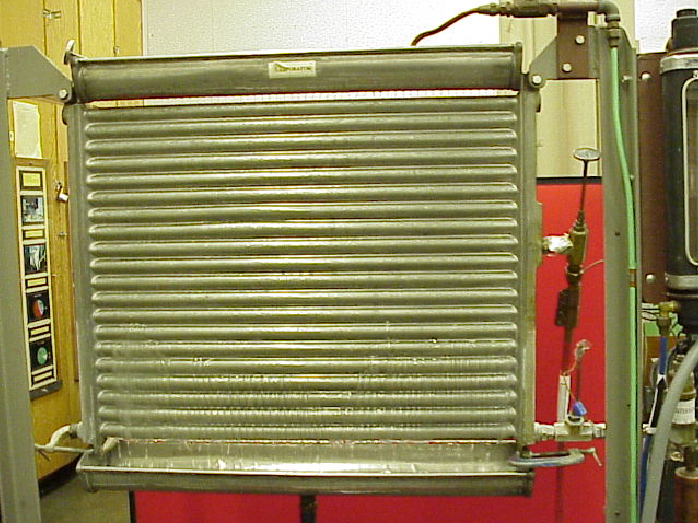
-
In a compressor, the refrigerant vapors are compressed to a high pressure. In the photograph below, the compressor is on the left while the electric motor is on the right.
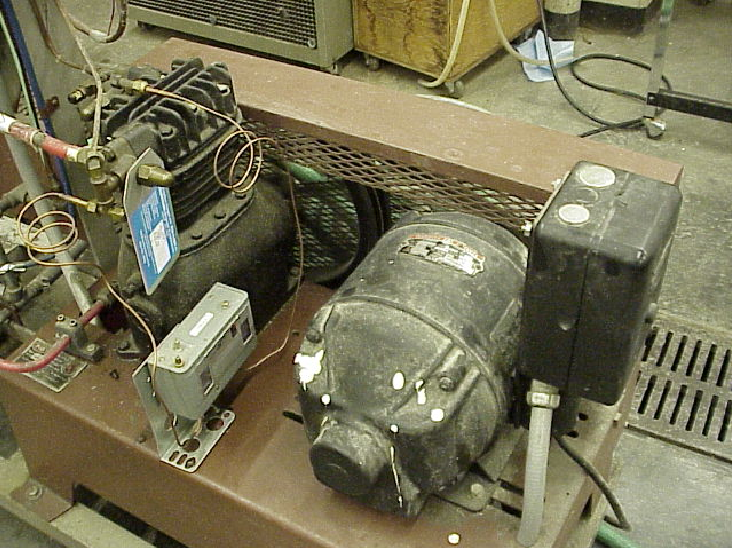
-
In a condenser, refrigerant vapors condense into liquid.

-
In the expansion valve, the refrigerant undergoes a sharp decrease in pressure.
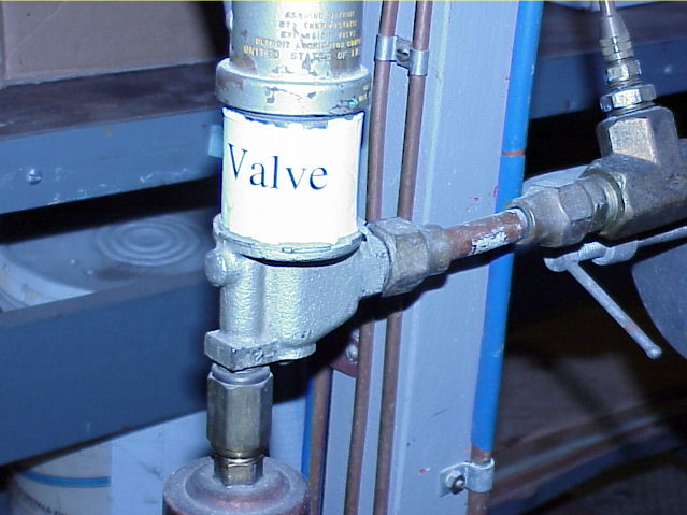
-
In the virtual experiment, use the following steps:
1) Select the appropriate refrigerant.
2) Enter evaporator temperature, select super heating box (and enter amount of superheating) if present. Click on "Calculate" button.
3) Enter compressor temperature, check subcooling box (and enter amount of subcooling) if present. Click on "Calculate" button.
4) Click on the "Draw the Refrigerant Cycle" button. The actual refrigeration cycle will be shown as well as Evaporator pressure, Compressor pressure, and enthalpy (H1, H2 and H3) values.
You may repeat the experiment by selecting another refrigerant and repeating steps 1 through 4.
-
A refrigeration system is evaluated by determining the change in enthalpy of a refrigerant as it moves through various components. Using a pressure-enthalpy chart of a given refrigerant, the refrigeration cycle is drawn and the enthalpy values are obtained. In the following slides, you will first view a refrigeration system operating under saturated conditions. The second slide is for a case when superheating and subcooling are present. For the following slides, you may want to use zoom feature (by clicking the right button on the mouse and choosing "Zoom In").
-
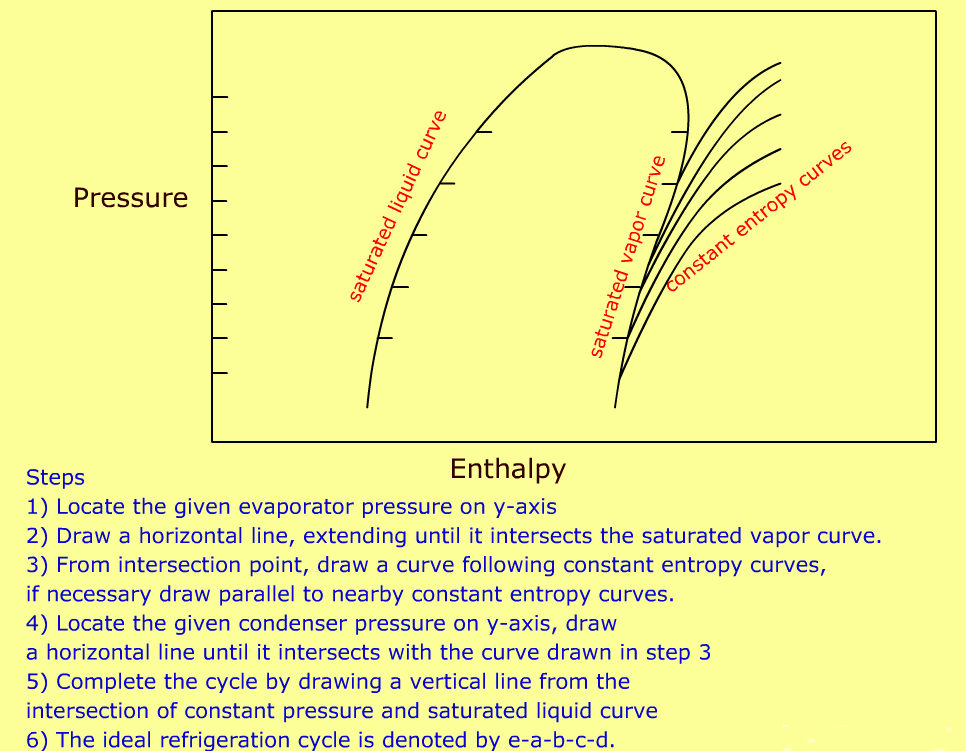
-
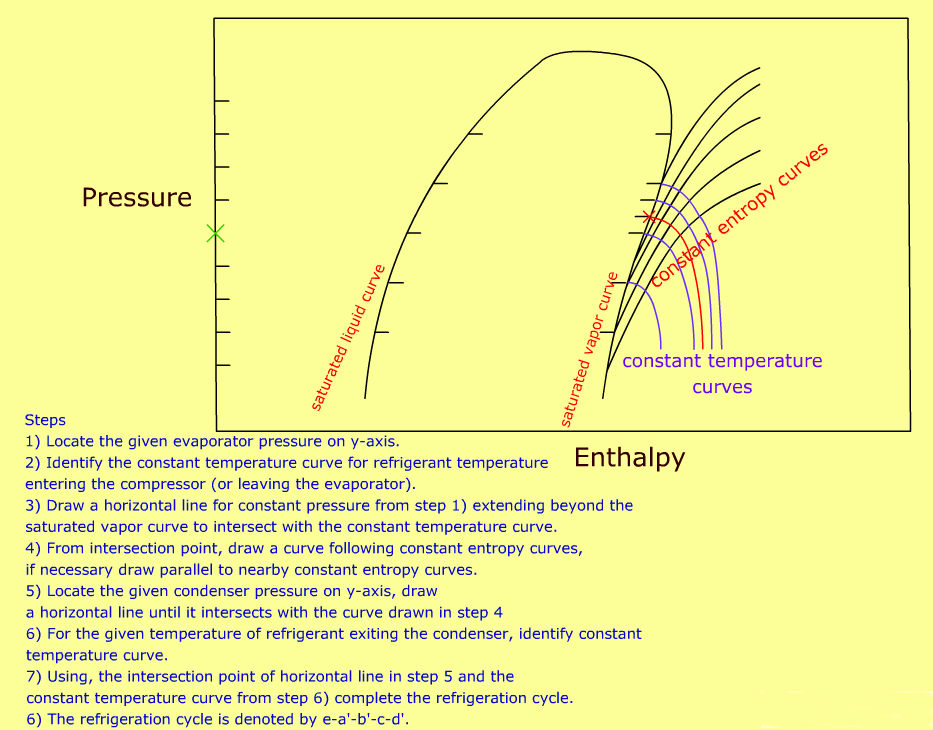

-
In the virtual experiment, you obtained coefficient of performance and compressor power for different conditions of evaporator and condenser temperatures. Observe the effect of changing the evaporator and condenser temperatures on the performance of a refrigeration system. Note the change in the pressure-enthalpy diagram when superheating or subcooling is present. Similarly, observe the effect on compressor power when different refrigerants are used.
- Does the coefficient of performance change for different refrigerants and different evaporator and condenser temperatures? Discuss.
- For 5 tons of refrigeration load, determine the mass flow rate of refrigerant for different operating conditions used in the experiment.
- Determine the compressor power requirement when the compressor efficiency is 85% for each refrigerant.
- American Society of Heating, Refrigeration and Air-Conditioning Engineers
- International Institute of Refrigeration
- United Refrigeration Incorporation
- Refrigeration Technologies
- Accent Refrigeration Systems, Ltd.
- Cengel, Y.A. (1998). "Heat Transfer, A Practical Approach," McGraw Hill Co., Inc. New York.
- Singh, R.P. and Heldman, D.R. (2009). "Introduction to Food Engineering," 4th ed., Academic Press, London.
- Stoecker, W.F. (1998). "Industrial Refrigeration," Business News Publishing Co., Troy.
